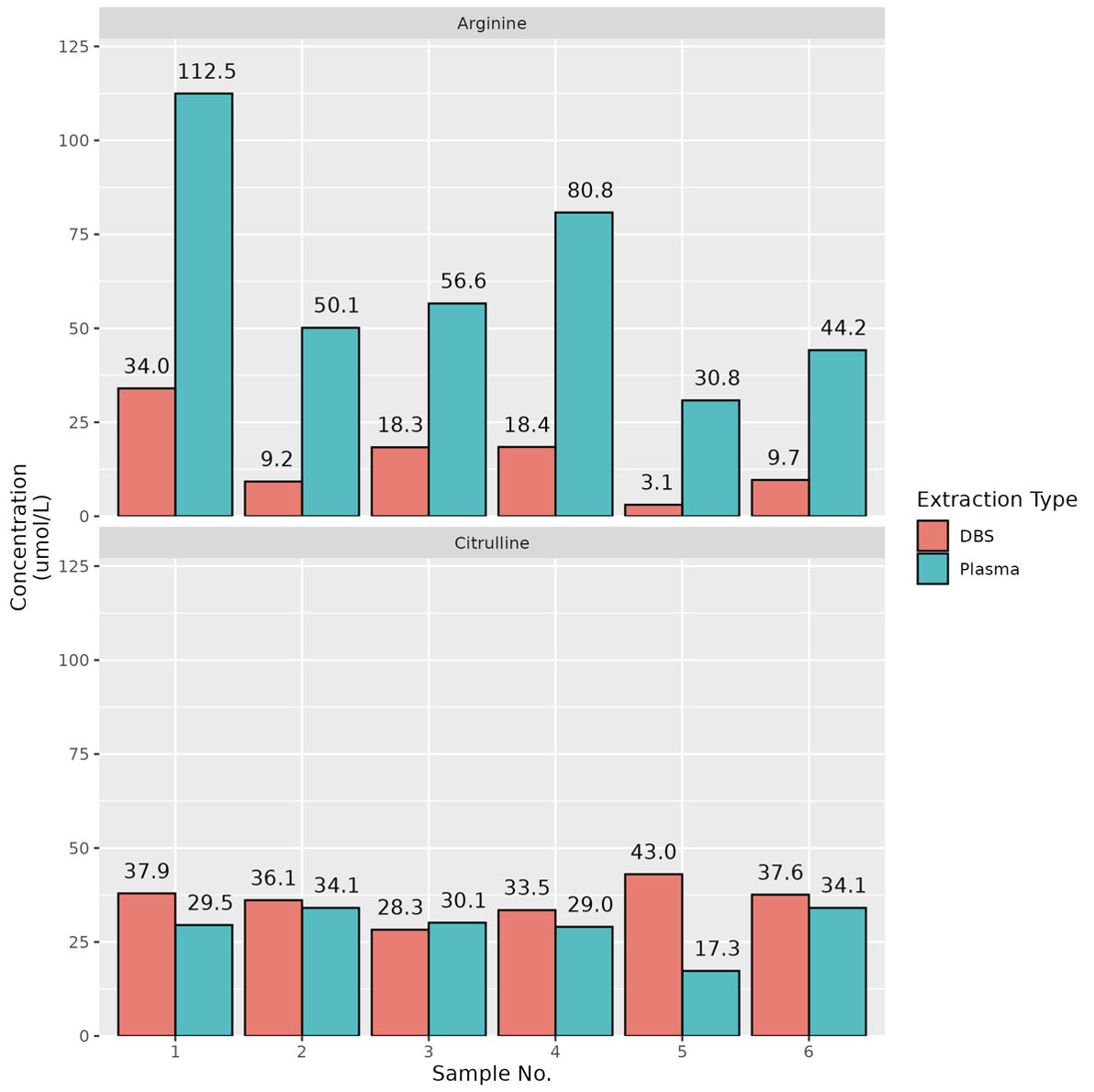Neonatal General 11
Session: Neonatal General 11
423 - Arginine measurement in dry blood sample and whole blood sample
Monday, April 28, 2025
7:00am - 9:15am HST
Publication Number: 423.4018
Zainab Manan, University of Texas Medical Branch School of Medicine, Galveston, TX, United States; Areeba Makhdoom, McGovern Medical School at the University of Texas Health Science Center at Houston, houston, TX, United States; Ashraf Aly, Utmb, Galveston, TX, United States; Sunil Jain, University of Texas Medical Branch School of Medicine, Galveston, TX, United States
- SJ
Sunil Jain, MD (he/him/his)
University of Texas Medical Branch School of Medicine
Galveston, Texas, United States
Presenting Author(s)
Background: Amino acid measurement, particularly of arginine (ARG) and citrulline (CIT), is commonly used to assess various clinical conditions in adults and neonates. Traditionally, these measurements require approximately 2-3 mL of blood. However, dried blood samples (DBS) have been used in newborn screening for metabolic disorders. This study aims to investigate whether DBS can serve as an accurate method for measuring ARG and CIT levels.
Objective: This study aims to evaluate the accuracy of dried blood samples as a method for measuring the levels of arginine and citrulline.
Design/Methods: We collected 2 mL of blood from 6 healthy volunteers. 50 μL blood was spotted for each spot of a DBS card. Cards were left to dry for 3 hours horizontally before being stored in a plastic bag and saved at 4°C. The remaining blood was centrifuged to separate plasma, which was then aliquoted and frozen at -80°C. Liquid chromatography and mass spectrometer (LCMS) were used to measure ARG and CIT concentration in plasma and DBS. Data was analyzed by LCMS peak areas with MultiQuant software (v23.1.0.455, MacCoss Lab Software). Concentrations from DBS were calculated using the internal standard. Linear regression of the standard curves provided the equation for ARG and CIT to calculate sample concentrations. Data was analyzed, and plots were created using R/RStudio (R v4.4.1; RStudio v2024.09.0).
Results: Expected plasma ARG and CIT concentrations were 32.0-150.0 μmol/L and 13.7-63.2 μmol/L. Plasma ARG and CIT concentrations were within the expected range. CIT concentration from DBS matches plasma very closely (Figure 1). ARG concentration was lower in DBS compared to plasma.
Conclusion(s): DBS could save blood in extremely premature infants when measuring amino acid levels. Our findings show that DBS is accurate for measuring citrulline levels. However, measurements of arginine concentration using DBS were not accurate. We are using other LCMS methods to improve DBS measurement of arginine levels.
Figure 1


